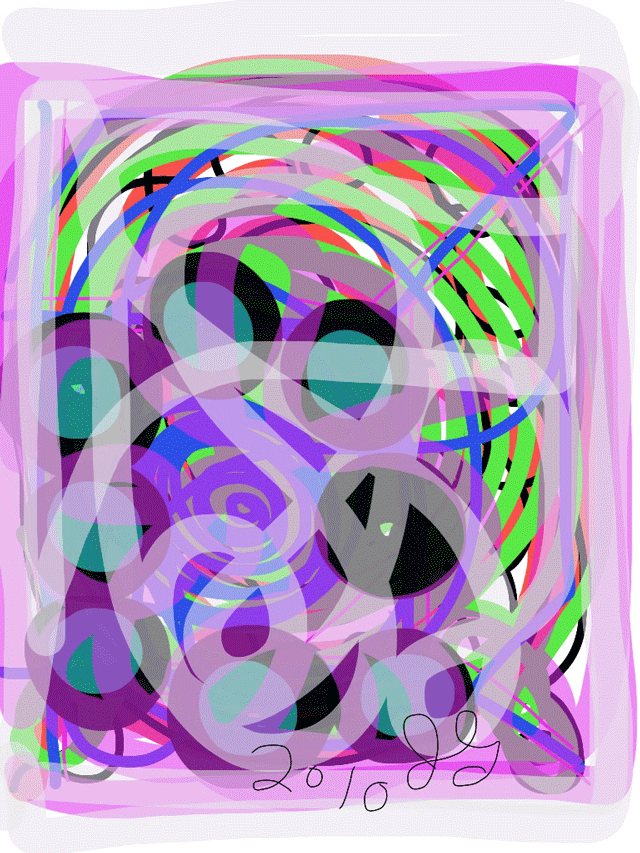July 19, 2010
Joanne Greenbaum

While in Berlin, I stopped by to visit Joanne Greenbaum, who is now splitting her time between the USA (New York) and the EU. After a studio visit, we had lunch nearby her neighborhood of Kreuzberg. I pulled out my iPad, eager to show her the Brushes App and see what she might do with it.
Later, I scribbled out a few notes from our visit off the top of my head. Here they are, as they are (crude), with minimal editing:

Joanne GreenbaumComposition and its other, the note pad. Note pads and marginalia. She likes to treat her paintings and works on paper like note pads, the urgency of transcription over-riding overall composition.
She happily flaunts the strictures of composition. The edges of the canvas call out for design. The four edges so perpendicularly justified, corrals and orchestrates the movements of the eye, the organization within happens fast or slow or otherwise according a theme or vision or mood. And yet Joanne wants to be free of that. She spoke of not always knowing right away what is good or bad in her work, that sometimes it takes time and one day in a flash, she sees something new, that where once something was either ugly or unresolved, later there exists something interesting or novel. Beauty in this case is emergent and fluid. Beauty can be found in its' other. Beauty can lie hidden in plain sight.
Is her desire to live in Germany a desire to connect to a notorious barbarian embrace of ugliness and a willful disregard of composition that characterizes contemporary German painting? (Albert Oehlen, Andr? Butzer, et al) ...Not necessarily. She has many other reasons to split her time between the US and the EU.
Joanne tentatively suggested a return to cubist space: facets, fragments, and yet isn't there something different here? If her work has shattered planes, her edges are soft, not hard and sharp. Considering this, I thought of the fragmentation of modernity and the postmodern artifice of the artificial reintegration of modalities (coordinated systems of installation, the ambition of multiple genres, the overarching reach of politics and critical theory, the recurring desire to overcome the singularity of painting...); I thought of fragmentation as it is in the facets of something like a glass or a diamond, as if the facets of such a gemstone could be polished into something like the singularity of a lens... is this what she is doing by softening the edges of Cubist space? Don't we feel a kind of remorse regarding the fragmentation of modern life and we all desire it to be like it once was (as it was in the garden of Eden?) ...that we wish to return to innocence (Woodstock), that perhaps we could not (Altamont), that perhaps there is a way to create innocence ad hoc, as if there were a way to simulate reintegration in a way that would be at least marginally acceptable...
We rue our shattered lives, but isn't this is what modernity does, it breaks, it fragments, it shatters, it is shattered, it is shattering? And that which comes after modernity, doesn't it seek to repair the break, smooth the edges, ease the pain? But then a life without pain, what is that? A junkie's heaven, the last flop house. A child that never leaves home. A creature who refuses to grow.
Is there a way of faceting that is not rigid as it once was? Could there be facets that degrade, bend, that are feeble, that are on the verge of collapse? (Wouldn't this depend on the nature of the material that is broken?) Is there a Cubistic space that is malleable, fugitive, fungible? Is this is what Joanne is reaching for, what she has invented, what she has found?
Posted by Dennis at July 19, 2010 6:26 AM
Leave a comment